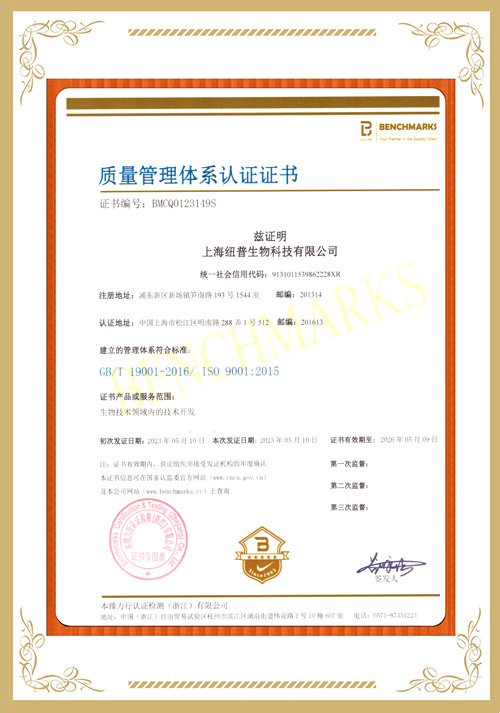- 抗体类型:单克隆
- 抗体来源:兔
- 抗体应用:ELISA, WB
- 特异性:Mouse TH / Tyrosine Hydroxylase
No cross-reactivity in ELISA with Human TPH1
产品详情
-
产品名称
Anti-TH / Tyrosine Hydroxylase antibody
-
抗体类型
单克隆
-
抗体来源
兔
-
抗体亚型
兔IgG
-
抗体描述
Rabbit monoclonal to TH / Tyrosine Hydroxylase
-
抗体应用
ELISA, WB
-
应用推荐
WB: 2-10 μg/ml
ELISA: 0.1-0.2 μg/mL
This antibody can be used at 0.1-0.2 μg/mL with the appropriate secondary reagents to detect Mouse TH / Tyrosine Hydroxylase. The detection limit for Mouse TH / Tyrosine Hydroxylase is 0.0195 ng/well.
-
特异性
Mouse TH / Tyrosine Hydroxylase
No cross-reactivity in ELISA with Human TPH1 -
蛋白别名
DYT14, OTTMUSP00000020341, Th, TYH, TYH, DYT14, DYT5b, Tyrosine Hydroxylase, DYT5b, TH, tyrosine 3-hydroxylase, tyrosine 3-monooxygenase, Tyrosine Hydroxylase
-
制备方法
This antibody was obtained from a rabbit immunized with purified, recombinant Mouse TH / Tyrosine Hydroxylase (rh TH / Tyrosine Hydroxylase; P24529; Pro2-Ser498).
-
组分
0.2 μm filtered solution in PBS
-
储存方法
This antibody can be stored at 2℃-8℃ for one month without detectable loss of activity. Antibody products are stable for twelve months from date of receipt when stored at -20℃ to -80℃. Preservative-Free.
Sodium azide is recommended to avoid contamination (final concentration 0.05%-0.1%). It is toxic to cells and should be disposed of properly. Avoid repeated freeze-thaw cycles. -
背景介绍
Tyrosine hydroxylase (TH) is a rate-limiting enzyme in catecholamine synthesis. Tyrosine hydroxylase activity is modulated by protein-protein interactions with enzymes in the same pathway or the tetrahydrobiopterin pathway, structural proteins considered to be chaperones that mediate the neuron's oxidative state. It is phosphorylated at serine (Ser) residues Ser8, Ser19, Ser31 and Ser40 in vitro. The phosphorylation of tyrosine hydroxylase at Ser19 or Ser8 has no direct effect on tyrosine hydroxylase activity. As tyrosine hydroxylase (TH) catalyses the formation of L-DOPA, the rate-limiting step in the biosynthesis of DA, the Parkinson's disease (PD) can be considered as a TH-deficiency syndrome of the striatum. A direct pathogenetic role of TH has also been suggested, as the enzyme is a source of reactive oxygen species (ROS) in vitro and a target for radical-mediated oxidative injury. Recently, it has been demonstrated that L-DOPA is effectively oxidized by mammalian Tyrosine hydroxylase in vitro, possibly contributing to the cytotoxic effects of DOPA.
-
参考文献
- Daubner SC, et al. (2011) Tyrosine hydroxylase and regulation of dopamine synthesis. Arch Biochem Biophys. 508(1): 1-12.
- Dunkley PR, et al. (2004) Tyrosine hydroxylase phosphorylation: regulation and consequences. J Neurochem. 91(5): 1025-43.
- Haavik J, et al. (1998) Tyrosine hydroxylase and Parkinson's disease. Mol Neurobiol. 16(3): 285-309.


